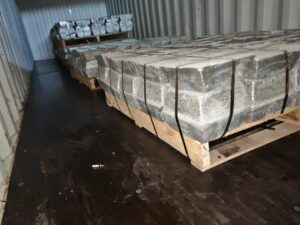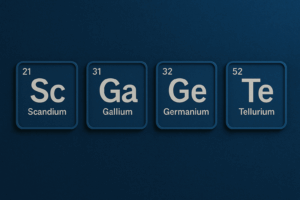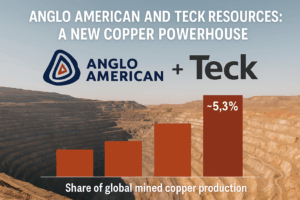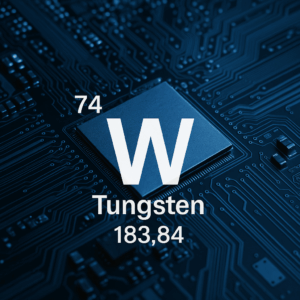Core Consultants recently completed a feasibility study assessing the potential to establish a high-purity manganese processing plant in South Africa. The country is endowed with vast manganese resources, including significant above-ground stockpiles of unused fines that could serve as a viable feed source. Should this project advance, it could deliver wide-ranging benefits: creating a new beneficiation pathway, establishing a value-added industry in a strategically important global market, and unlocking economic value from resources that have remained untapped for decades. What follows is a summary of our findings.
Introduction: Why HP-EMD Matters
While lithium, cobalt, and nickel dominate the headlines in battery materials, High Purity Electrolytic Manganese Dioxide (HP-EMD) is quietly emerging as one of the most strategic minerals of the clean energy transition. HP-EMD is not glamorous, but it is essential. It forms the cathode material in alkaline batteries, primary lithium batteries, and increasingly, lithium-ion formulations used in electric vehicles (EVs) and energy storage.
A recent market study projects that the HP-EMD market will double in value from $1.5 billion in the early 2020s to nearly $5 billion by 2030, driven by consumer demand for portable power, the electrification of transport, and the global pivot to clean energy.
This post unpacks the key findings of the report — supply, demand, recycling, pricing, and the challenges that define the HP-EMD industry.
The Supply Side: A Concentrated Market
Production of HP-EMD is highly concentrated. Over 60% of global output comes from China, with major players like Xiangtan Electrochemical and CITIC Dameng. Japan’s Tosoh Corporation, the U.S. firm Borman Specialty Materials, and India’s state-owned MOIL Ltd. provide additional but smaller volumes.
- Global production rose from 320,000 tonnes in 2020 to over 415,000 tonnes by 2024.
- China remains the anchor, but projects in Europe (Euro Manganese’s Chvaletice project in the Czech Republic) and Canada’s Woodstock initiative show a clear trend: supply chain diversification.
- Still, HP-EMD production is capital-intensive, requiring $50–100 million for a new facility and 2–3 years to commission. This limits new entrants.
The result is a market where a few well-capitalized producers dominate, and regional players struggle to scale.
Demand Dynamics: Alkaline Batteries to EVs
Alkaline batteries remain the single largest consumer of HP-EMD — think of the 15+ billion AA and AAA batteries sold worldwide each year. Each AA cell contains 6–8 grams of EMD, translating into over 100,000 tonnes annually.
But the real growth story lies elsewhere:
- Lithium Manganese Oxide (LMO) batteries, derived from HP-EMD, are seeing rapid uptake in electric scooters, e-bikes, and entry-level EVs.
- The global two-wheeler EV market is forecast to grow at 28% CAGR through 2030, driving HP-EMD demand from 30,000 tonnes in 2025 to more than 80,000 tonnes by 2035.
- Primary lithium batteries (like CR coin cells for electronics) remain a smaller but lucrative niche, requiring ultra-pure HP-EMD grades.
In short, alkaline batteries keep the market stable, but lithium-ion and mobility applications are the growth engine.
Recycling: A Coming Disruptor
One of the most important themes in the report is the rise of battery recycling.
- By 2030, between 11–19% of Europe’s manganese demand for batteries could be met by recycled materials.
- By 2040, as much as 30% of global demand could be filled through recycling streams.
Advanced hydrometallurgical processes now recover HP-EMD from spent batteries at >90% purity. Companies like Redwood Materials in the U.S. are already partnering with battery manufacturers to close the loop.
But challenges remain:
- Recycling costs are 10–15% higher than primary production.
- Collection rates in emerging economies remain below 60%, limiting feedstock.
Still, recycling is poised to be a game-changer, particularly in the EU and China, where strict Extended Producer Responsibility (EPR) laws enforce circularity.
Pricing and Trade
Unlike bulk commodities, HP-EMD is not traded on exchanges. It is sold through long-term contracts between producers and major battery manufacturers such as Duracell, Energizer, and Panasonic.
- As of mid-2025, prices ranged between $1,800 and $2,100 per tonne, depending on grade.
- Alkaline battery grade fetches the highest premium due to stringent purity requirements.
- LMO-grade EMD prices have softened slightly in recent years as competition from alternative cathodes (like NMC and LFP) intensifies.
Because cathode chemistry is highly sensitive to feedstock, once a manufacturer qualifies a supplier, they rarely switch. This creates a sticky demand relationship and explains why EMD prices remain relatively resilient despite market shifts.
Regional Perspectives
- China: Dominant in both production and consumption, feeding its vast EV and consumer electronics markets.
- Europe: Building strategic independence via the Chvaletice project and strict recycling mandates under the EU Critical Raw Materials Act.
- North America: Focused on localization to support domestic EV manufacturing, with projects like Canada’s Woodstock plant targeting long-term supply.
- India: Emerging, with MOIL Ltd. gradually improving purity standards to align with EV battery requirements.
- Asia ex-China: Rapid growth in alkaline and two-wheeler demand, particularly in India and Southeast Asia.
Challenges Ahead
Despite optimism, the HP-EMD market faces structural hurdles:
- Capital Intensity – Few companies can shoulder the $100m+ required to scale production.
- Environmental Pressures – HP-EMD production is energy-intensive and heavily scrutinized for its water and waste footprint.
- Substitution Risks – New chemistries like LFP (lithium iron phosphate) are growing rapidly, particularly in EVs, potentially capping HP-EMD’s share.
- Geopolitics – With China controlling most of the value chain, Western governments view HP-EMD as a strategic vulnerability.
Strategic Outlook
The report concludes that global HP-EMD demand will continue to rise at 6–8% CAGR, closely tracking the growth of EVs and portable energy. By 2035, demand could exceed 470,000 tonnes, with Europe and North America capturing a larger share of supply growth.
Investors and policymakers should focus on:
- Recycling ventures that can deliver high-purity, cost-competitive HP-EMD.
- Regional projects like Euro Manganese’s Chvaletice facility that reduce reliance on China.
- Technology improvements in cathode design that increase manganese intensity, such as high-manganese NMC or LNMO.
Key Takeaways
- HP-EMD is the unsung hero of the battery sector, anchoring both legacy alkaline batteries and emerging EV chemistries.
- Supply is highly concentrated in China, but new projects in Europe and North America are slowly diversifying risk.
- Recycling is set to reshape the industry, potentially supplying 30% of demand by 2040.
- Prices remain resilient due to sticky supplier relationships and high purity requirements.
- The next decade will define whether HP-EMD becomes a bottleneck or a competitive advantage in the global energy transition.





